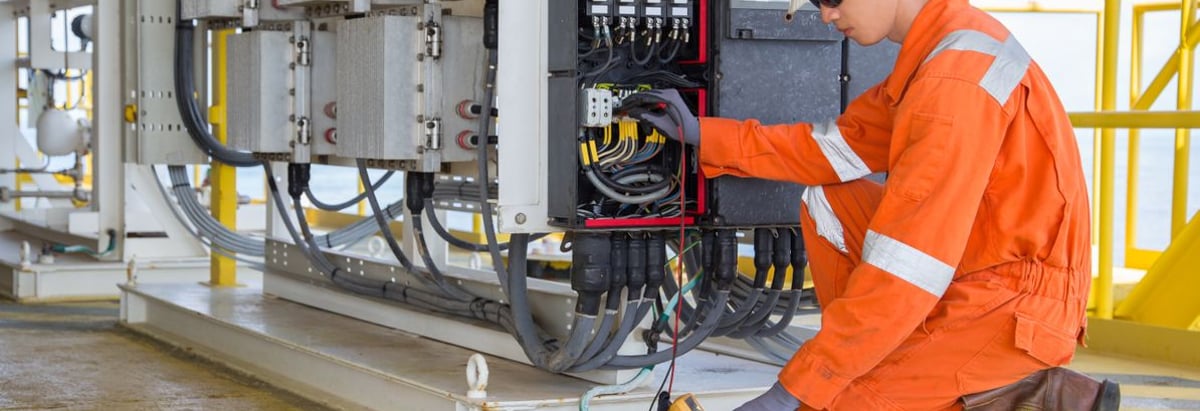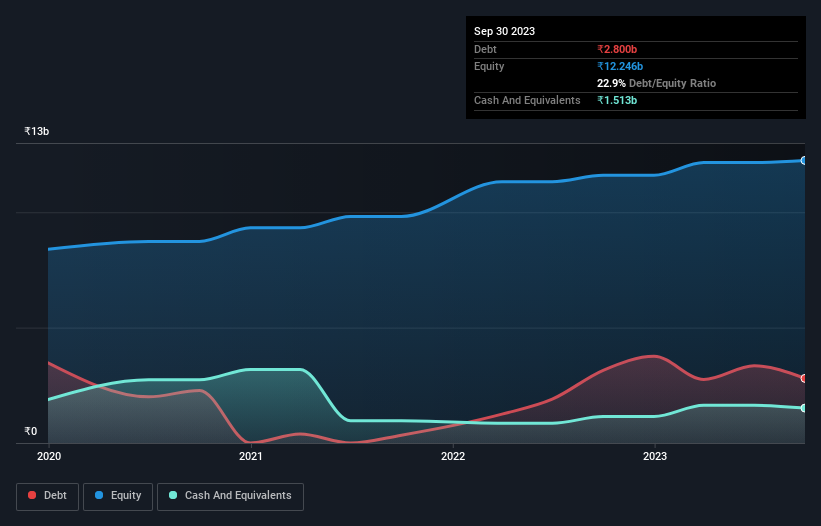- India
- /
- Electrical
- /
- NSEI:POWERINDIA
Hitachi Energy India (NSE:POWERINDIA) Seems To Use Debt Quite Sensibly

Howard Marks put it nicely when he said that, rather than worrying about share price volatility, 'The possibility of permanent loss is the risk I worry about... and every practical investor I know worries about.' It's only natural to consider a company's balance sheet when you examine how risky it is, since debt is often involved when a business collapses. As with many other companies Hitachi Energy India Limited (NSE:POWERINDIA) makes use of debt. But should shareholders be worried about its use of debt?
What Risk Does Debt Bring?
Debt is a tool to help businesses grow, but if a business is incapable of paying off its lenders, then it exists at their mercy. In the worst case scenario, a company can go bankrupt if it cannot pay its creditors. However, a more usual (but still expensive) situation is where a company must dilute shareholders at a cheap share price simply to get debt under control. Of course, plenty of companies use debt to fund growth, without any negative consequences. The first step when considering a company's debt levels is to consider its cash and debt together.
View our latest analysis for Hitachi Energy India
What Is Hitachi Energy India's Net Debt?
You can click the graphic below for the historical numbers, but it shows that Hitachi Energy India had ₹2.80b of debt in September 2023, down from ₹3.15b, one year before. On the flip side, it has ₹1.51b in cash leading to net debt of about ₹1.29b.

How Healthy Is Hitachi Energy India's Balance Sheet?
According to the last reported balance sheet, Hitachi Energy India had liabilities of ₹27.6b due within 12 months, and liabilities of ₹503.8m due beyond 12 months. Offsetting this, it had ₹1.51b in cash and ₹14.2b in receivables that were due within 12 months. So it has liabilities totalling ₹12.3b more than its cash and near-term receivables, combined.
Since publicly traded Hitachi Energy India shares are worth a total of ₹222.7b, it seems unlikely that this level of liabilities would be a major threat. Having said that, it's clear that we should continue to monitor its balance sheet, lest it change for the worse. But either way, Hitachi Energy India has virtually no net debt, so it's fair to say it does not have a heavy debt load!
In order to size up a company's debt relative to its earnings, we calculate its net debt divided by its earnings before interest, tax, depreciation, and amortization (EBITDA) and its earnings before interest and tax (EBIT) divided by its interest expense (its interest cover). Thus we consider debt relative to earnings both with and without depreciation and amortization expenses.
While Hitachi Energy India's low debt to EBITDA ratio of 0.53 suggests only modest use of debt, the fact that EBIT only covered the interest expense by 3.9 times last year does give us pause. But the interest payments are certainly sufficient to have us thinking about how affordable its debt is. If Hitachi Energy India can keep growing EBIT at last year's rate of 13% over the last year, then it will find its debt load easier to manage. There's no doubt that we learn most about debt from the balance sheet. But ultimately the future profitability of the business will decide if Hitachi Energy India can strengthen its balance sheet over time. So if you're focused on the future you can check out this free report showing analyst profit forecasts.
Finally, a company can only pay off debt with cold hard cash, not accounting profits. So it's worth checking how much of that EBIT is backed by free cash flow. In the last three years, Hitachi Energy India's free cash flow amounted to 26% of its EBIT, less than we'd expect. That weak cash conversion makes it more difficult to handle indebtedness.
Our View
When it comes to the balance sheet, the standout positive for Hitachi Energy India was the fact that it seems able handle its debt, based on its EBITDA, confidently. But the other factors we noted above weren't so encouraging. For example, its conversion of EBIT to free cash flow makes us a little nervous about its debt. Considering this range of data points, we think Hitachi Energy India is in a good position to manage its debt levels. Having said that, the load is sufficiently heavy that we would recommend any shareholders keep a close eye on it. There's no doubt that we learn most about debt from the balance sheet. However, not all investment risk resides within the balance sheet - far from it. Case in point: We've spotted 1 warning sign for Hitachi Energy India you should be aware of.
At the end of the day, it's often better to focus on companies that are free from net debt. You can access our special list of such companies (all with a track record of profit growth). It's free.
Valuation is complex, but we're here to simplify it.
Discover if Hitachi Energy India might be undervalued or overvalued with our detailed analysis, featuring fair value estimates, potential risks, dividends, insider trades, and its financial condition.
Access Free AnalysisHave feedback on this article? Concerned about the content? Get in touch with us directly. Alternatively, email editorial-team (at) simplywallst.com.
This article by Simply Wall St is general in nature. We provide commentary based on historical data and analyst forecasts only using an unbiased methodology and our articles are not intended to be financial advice. It does not constitute a recommendation to buy or sell any stock, and does not take account of your objectives, or your financial situation. We aim to bring you long-term focused analysis driven by fundamental data. Note that our analysis may not factor in the latest price-sensitive company announcements or qualitative material. Simply Wall St has no position in any stocks mentioned.
About NSEI:POWERINDIA
Hitachi Energy India
Offers products, projects, and services for electricity transmission and related activities in India and internationally.
Exceptional growth potential with excellent balance sheet.


